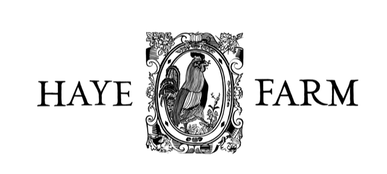WHY ORGANIC & REGENERATIVE?
Until two generations ago, organic farming was the norm. People everywhere understood the complexity and fragility of the natural world. In a time before artificial fertilisers, animals were an essential part of the farm ecosystem. With no antibiotics to rely on, high standards of animal husbandry and welfare were vital if farmers wanted to see a return on investment on their livestock. And, with pesticides as yet unheard of, companion planting and natural pest control was the norm.
But somewhere along the line, as farmers were urged to increase production and become more industrialised, something went badly wrong. We concentrated on squeezing the maximum we could out of every acre of land, no matter whether that meant animals with barely enough room to move, fields sprayed so heavily all the birds and the butterflies disappeared, or vast run offs of soil and slurry into our rivers and oceans. In short, we prioritised profit – or low prices, depending on your standpoint – above all else. And, most worryingly of all, we started to forget that we too, were part of an ecosystem, not separate from it.
We’ve always believed that farming has to be looked at more holistically and so we adhere to many of the traditional principles, which are now at the heart of organic certification. The Soil Association logo on our produce signals that we have rigorous standards of animal welfare; that we don't use chemical fertilisers or pesticides and that we only use medication on our animals as a last resort. It also means that we don’t feed GM grain to our animals, don't use any synthetic additives in our beer for example, and that all our practices build and maintain the health of the soil.
Our ruminant livestock are predominantly grass fed and kept outside year-round. This benefits the animals as it’s their natural diet, and also helps to improve the soil and biodiversity. Crucially, it’s one of the many ways in which we strive to make our system carbon positive, rather than carbon negative. Climate change caused by excess CO2 is one of the biggest threats to life today. Agriculture is a big contributor to the problem, but it also has the potential to be a significant part of the solution. The healthier the soil, the more carbon it can absorb. This reduces greenhouse gasses as well as improving soil structure, which reduces run offs and mitigates the effects of drought and flooding alike. In this way, good land management affects far more than just the food we produce – it can regenerate the entire ecosystem of the farm and the land around it.
But somewhere along the line, as farmers were urged to increase production and become more industrialised, something went badly wrong. We concentrated on squeezing the maximum we could out of every acre of land, no matter whether that meant animals with barely enough room to move, fields sprayed so heavily all the birds and the butterflies disappeared, or vast run offs of soil and slurry into our rivers and oceans. In short, we prioritised profit – or low prices, depending on your standpoint – above all else. And, most worryingly of all, we started to forget that we too, were part of an ecosystem, not separate from it.
We’ve always believed that farming has to be looked at more holistically and so we adhere to many of the traditional principles, which are now at the heart of organic certification. The Soil Association logo on our produce signals that we have rigorous standards of animal welfare; that we don't use chemical fertilisers or pesticides and that we only use medication on our animals as a last resort. It also means that we don’t feed GM grain to our animals, don't use any synthetic additives in our beer for example, and that all our practices build and maintain the health of the soil.
Our ruminant livestock are predominantly grass fed and kept outside year-round. This benefits the animals as it’s their natural diet, and also helps to improve the soil and biodiversity. Crucially, it’s one of the many ways in which we strive to make our system carbon positive, rather than carbon negative. Climate change caused by excess CO2 is one of the biggest threats to life today. Agriculture is a big contributor to the problem, but it also has the potential to be a significant part of the solution. The healthier the soil, the more carbon it can absorb. This reduces greenhouse gasses as well as improving soil structure, which reduces run offs and mitigates the effects of drought and flooding alike. In this way, good land management affects far more than just the food we produce – it can regenerate the entire ecosystem of the farm and the land around it.
